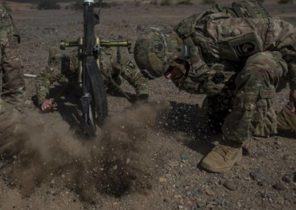Measures taken worldwide to combat the epidemic COVID-19, allow humanity to learn more about this deadly virus. According to a recent article published in the American journal “Proceedings of the National Academy of Sciences”, today there are three types of coronavirus, which depend on the characteristics of immunity in different population groups. Academician Zhong Nanshan also said that a new virus by mutation adapts to the human environment and becomes more contagious. What impact will the constant mutation COVID-19? In the end, “supertype” of this virus as worried about the Internet?
The original type of the virus prevalent in the USA and Australia
According to an article published in the journal PNAS, researchers from the University of Cambridge in the UK analyzed 160 genomes of coronavirus from around the world and found that “the first type of virus is mostly common in USA and Australia, but not in Wuhan”. But at the same time, the article emphasizes that the evidence gathered in different parts of the world at the present time, do not give a clear idea about the specific location of the initial origin of the virus.
The main author of this article academician of the Royal society of biology, Cambridge University geneticist Peter Forster told the “huanqiu Shibao” that the purpose of this study was mapping the evolution and spread of a new type of coronavirus by monitoring 160 genomes of the virus selected in the world in December last year to March this year.
The analysis of the evolutionary relationships COVID-19 scientists have identified three types of this virus — A, b and C. Type A, which is closest to a virus found in bats and lizards and that before all transferred to the person, although he was found in Wuhan, but has nothing to do with the type of virus that hit mainland China. Type a is predominantly found in the USA and Australia. “At least two-thirds of the confirmed cases in the United States are associated with a virus of this type”. In fact, in Wuhan was a common type In which mutated from the original type of virus. In France, Spain, Italy, UK and other European countries was discovered the type that originated from type B. Samples of coronavirus type not found in mainland China, but found in Singapore, Hong Kong, South Korea and other regions.
The research report, published by the University of Cambridge, attracted attention of Western academia and the media. In the comments under the appropriate publication of the British newspaper “Metro” Internet users said that they now realized that COVID-19 is not so simple and that early statements about “the Wuhan virus” was unfair.
Forster stressed that the new type of coronavirus has mutated too quickly, so scientists find it difficult to track the full chain of its mutations. Currently, the researchers expanded the scope of the sample to 1,001 genomes of the virus. Despite the fact that the results of the study have not been published, has already indicated certain patterns. Forster acknowledged that his colleagues from other countries insisted that “the virus that spread in Western countries, most likely, came from Wuhan”. Despite this, he was confident in the conclusions of his research group: “we Can state the fact that the earliest designs COVID-19, found in Wuhan, are type b, and not to the original type A. the Virus did not exist in Wuhan, but only in very small quantity.”
The mutated virus types occurring abroad is more contagious?
Why the U.S. and Australia found more cases of coronavirus belonging to type A? Forster believes that this is due to genes and immune systems of the local populations. In simple words, a virus of type a could not adapt in Wuhan, so has mutated into a more aggressive type B. In the United States and Australia And found a large number of available of hosts, which began to spread rapidly.
On 12 April, the Director of the Institute of Virology of Wuhan University, Yang Janicu told correspondents “huanqiu Shibao” that in different regions of the world apply various types of viruses, and it’s really related to race. The so-called “population susceptibility to the virus” in the scientific community means the ability of the virus to the immune system of people living in a particular area. In addition, the virus adapted to animal hosts and the environment of the area.
In a recent interview with academician Zhong Nanshan said that COVID-19 very quickly adapted to humans through genetic mutation, and therefore the intensity of its spread is relatively large. For comparison, deaths from coronavirus in 20 times more than a flu, this is really worth a pay attention. Hence, many worried whether returning from abroad carriers of the mutated types of the virus more contagious?
According to Jan Janicu to the mutated type of virus that is found abroad, can be sensitive to the locals, not Chinese, so these types are unlikely to cause the outbreak in China. In his opinion, the rapid spread of the virus, on the one hand, is related to the number of its speakers, on the other, has a close relationship with the mobility of people. Now in China, few new cases, because the country blocked the channels of spread of the epidemic. China has adopted strict measures of isolation for those returning from abroad, is the reduced possibility of transmission of the virus from abroad and stopped its spread. “Even if China gets the type of the virus, which is common in other countries, he will not be able to adapt. To do this, the virus must again go through the process of mutation. Thus, the inhabitants of China do not need to worry about people returning from abroad, will deliver even more terrible virus variants. Until the prevention, control and isolation, but also blocked the conditions for the transmission of the virus, everything will be all right.”
The emergence of a “supertype” of the virus is unlikely
Following the continuous spread of coronavirus infection in the world also there are concerns that in the process of further spread of the virus will continue to mutate, or even a “supertype”. Ian Janicu explained that, perhaps in the future will show new types COVID-19, but it will not happen immediately. On the question of whether there will be in the end, “supertype” of the virus he replied: “not necessarily”. Because, the more the virus mutates, the stronger the adaptability of people to this virus, consequently its ability to transfer will be reduced, and cause the pandemic will not be easy. In practice there is no case when the number of types would affect the strength of the virus. “However, if a mutation of the virus would be vulnerable, then a possible larger outbreak,” said Yan Zhangqiu.
The impact of continuous mutation of the coronavirus in the current epidemic? According to Ian Janicu, different types of the virus are closely associated with its pathogenicity. For example, a type common in Italy, have higher mortality, and pathogenicity, while the type common in South Korea and Japan, by contrast, has a lower pathogenicity and mortality. “The severity of the disease caused by different types, is different, respectively there are various methods and treatment. Currently the mutation of coronavirus has a greater impact on the manufacturing of the vaccine. “For example, the type of virus circulated in China, belongs to the type of V. If we use a vaccine against coronavirus type to avoid contamination in the zone affected by the virus of type A, the efficiency will be low.” It was like the annual mutations of the influenza virus. If you use a previous influenza vaccine to prevent an epidemic of the following year, it won’t work. Ian Janicu believes that the emergence of new types of virus necessary to develop new vaccines. Of course, theoretically there may be a vaccine that is effective against all three virus types, but this increases the complexity of developing such a vaccine.
Relatively speaking, the mutation of the virus may not have a big impact on drugs because they are primarily focused on the process of reproduction of the virus, while the vaccine is aimed at the virus itself. Viral infection has been associated with the receptor. While the drug blocks the receptors of the virus at an early stage, the infection will not happen, no matter what type of virus it was.







